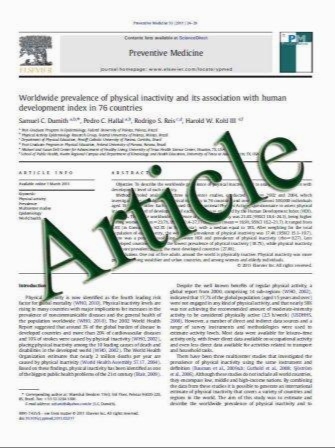A new paradigm (Westphal-Paradigm) to study the neural correlates of panic disorder with agoraphobia
- نوع فایل : کتاب
- زبان : انگلیسی
- مؤلف : A. Wittmann F. Schlagenhauf T. John A. Guhn H. Rehbein A. Siegmund M. Stoy D. Held I. Schulz L. Fehm T. Fydrich A. Heinz H.
- چاپ و سال / کشور: 2011
Description
Agoraphobia (with and without panic disorder) is a highly prevalent and disabling anxiety disorder. Its neural complexity can be characterized by specific cues in fMRI studies. Therefore, we developed a fMRI paradigm with agoraphobia-specific stimuli. Pictures of potential agoraphobic situations were generated. Twenty-six patients, suffering from panic disorder and agoraphobia, and 22 healthy controls rated the pictures with respect to arousal, valence, and agoraphobia-related anxiety. The 96 pictures, which discriminated best between groups were chosen, split into two parallel sets and supplemented with matched neutral pictures from the International Affective Picture System. Reliability, criterion, and construct validity of the picture set were determined in a second sample (44 patients, 28 controls). The resulting event-related ‘‘Westphal- Paradigm’’ with cued and uncued pictures was tested in a fMRI pilot study with 16 patients. Internal consistency of the sets was very high; parallelism was given. Positive correlations of picture ratings with Mobility Inventory and Hamilton anxiety scores support construct validity. FMRI data revealed activations in areas associated with the fear circuit including amygdala, insula, and hippocampal areas. Psychometric properties of the Westphal-Paradigm meet necessary quality requirements for further scientific use. The paradigm reliably produces behavioral and fMRI patterns in response to agoraphobia-specific stimuli. To our knowledge, it is the first fMRI paradigm with these properties. This paradigm can be used to further characterize the functional neuroanatomy of panic disorder and agoraphobia and might be useful to contribute data to the differentiation of panic disorder and agoraphobia as related, but conceptually different clinical disorders.
Eur Arch Psychiatry Clin Neurosci (2011) 261:185–194 DOI 10.1007/s00406-010-0167-1, Received: 11 April 2010 / Accepted: 28 October 2010 / Published online: 27 November 2010


